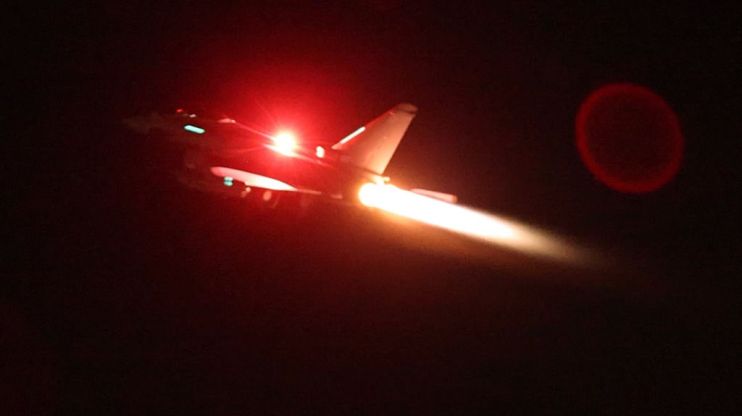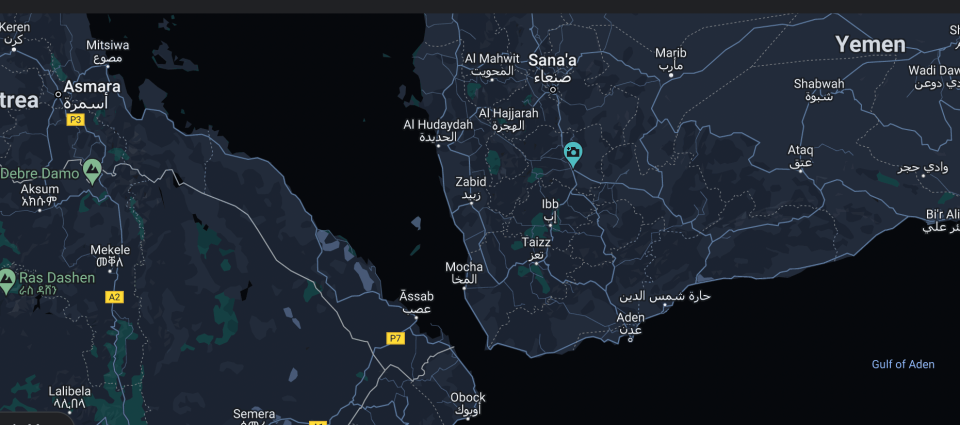Q&A: Who are the Houthis, and why are we involved in Yemen?

The UK, in concert with the USA and with the backing of a raft of nations including Canada, Australia and Bahrain, last night launched military attacks on facilities used by Houthi rebels in Yemen.
The Houthis have in recent months begun targeting international shipping passing through the Red Sea. Earlier this week a British warship repelled a major attack by the rebels on Red Sea shipping, shooting down a number of drones and missiles.
This morning Prime Minister Rishi Sunak said the attacks “cannot stand.”
But who are the Houthi rebels, why are they attacking Red Sea shipping and crucially why are the UK and the US getting involved?
Who are the Houthis?
An Islamic militant group, the Houthis emerged in the west of Yemen in the mid-1990s, with the main aim being to counter the influence of Saudi ‘Wahhabi’ Islam in the country.
The rebels fell in and out of accords with Yemeni president Ali Abdul Saleh, who spent much of his time receiving medical care in Saudi Arabia, before he was removed from power in 2011 as a result of an Arab Spring-era uprising. In 2015, Houthi forces stormed the capital – removing his successor, Abdrabbuh Mansur Hadi.
That triggered a civil war which has turned Yemen into one of the world’s most fragile, and impoverished, countries in the world.
Who is on whose side?
The Saudis and the United Arab Emirates have backed the effectively deposed Yemeni government against the Houthis since the beginning of the conflict, with western forces providing logistical support in the aftermath of Houthi threats to invade Saudi. However, western support has waned in recent years as bombing campaigns have continued.
Now ten years into the conflict, the Houthis control the capital Sana’a and much of the country’s western seaboard including the vital port of Hodeidah, effectively winning the civil war and splitting Yemen into regional power centres.
A ceasefire of sorts has existed since 2022, with further steps towards decreased involvement by the Saudis and Iranians taken in 2023.
Why have the Houthis begun attacking Red Sea shipping?
In the aftermath of Hamas’ assault on Israel in October and the Israeli response in Gaza, Houthi leaders vowed to support the militant group in its efforts to remove Israel from the map.
In November and December assaults on western shipping in the Red Sea began to escalate.
Goods coming from the global south to Israel – which the Houthis claiming any vessel which they thought could be headed to the Jewish state was a legitimate target – must pass through the narrow Bab el-Mandab strait on their way to the Red Sea and the Suez Canal.

The Houthis control most of the land on the west of that strait, and the shipping port of Hodeidah – shown in the map above as Al Hudaydah – which was hit in the attacks last night,
Why has the west responded?
In short, because there was little alternative. Counter-measures on ships were no longer proving effective and a number of more high-profile attacks, including the commandeering of a car carrier the Galaxy Leader which remains in Houthi possessions, forced the hand of western politicians who had hoped that the private security teams employed by shipping companies would provide effective defence.
Numbers vary but more than two dozen attacks have been carried out on global shipping and a number of major carriers have rerouted shipping around the Horn of Africa and the Cape of Good Hope, adding significant costs which will filter through to western consumer economies.
The west had kept its opprobrium largely to diplomatic circles until just after Christmas, when US forces were called on to protect a Maersk freight ship under attack from Houthi rebels. US planes sunk a number of Houthi boats.
The trigger for last night’s attack – which now includes Britain – appears to have been a drone and missile attack on Red Sea shipping two days ago, the biggest of its kind so far.
This morning Houthi officials have warned the UK and the US that attacks will continue.